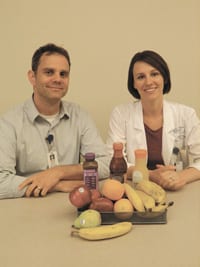Colorectal Cancer Can Be Prevented
C
olorectal cancer is the second-leading cause of cancer-related death and the third-most common cancer for both men and women in the U.S. The disease claims more than 50,000 lives each year; only lung cancer causes more deaths from cancer.
Many of the deaths from colorectal cancer, however, are needless. Unlike other cancers, such as breast cancer or prostate cancer, screening for colorectal cancer can save lives by actually preventing the cancer from occurring. But 23 million American adults — about one in three — do not get screened as recommended. As a result, according to the American Cancer Society, more than 135,000 cases of colorectal cancer are diagnosed every year, a far great number than cancers of the esophagus, stomach, pancreas, or other organs of the digestive system.
As its name suggests, colorectal cancer occurs in the colon and the rectum, parts of the large intestine, and is caused by unwanted growths called polyps that can turn into cancer.
Unfortunately, the average American vastly underestimates the risk of colorectal cancer. The lifetime risk of this cancer is about 1 in 20, which represents the likelihood of getting colorectal cancer without screening.
The causes of this cancer result from an interplay of genetics, environment, diet, and lifestyle. In westernized nations, for example, the incidence of colorectal cancer is high, but in other parts of the world, such as Asia, is it low. However, individuals immigrating to the U.S., after 10 to 12 years of living here, have the same frequency of the disease as those born or living here for a long time.
That occurrence suggests a connection between the cancer and environmental factors, especially diet. A diet high in fat, low in fiber, with too much processed food and red meat — characteristics of a western diet — appears to have a link to colorectal cancer.
Both men and women are at risk for colorectal cancer, and it is usually found in people over the age of 50. While some people with polyps or cancer can have symptoms, such as blood in the stool or stomach pains or cramps that persist, colorectal cancer can begin without symptoms. That’s why screening is so important: screening finds the polyps so they can be removed before they turn cancerous.
Screening should begin at age 50 for both men and women, but should occur earlier — at age 40 — if there is a family history of the disease.
Several screening tests are available, including fecal occult blood testing or a stool test; sigmoidoscopy, an examination of the rectum and lower third of the colon; a ‘virtual’ colonoscopy, with X-rays and computers producing images of the entire colon; and actual colonoscopy, a procedure done in a hospital or clinic.
Actual colonoscopy is the test physicians recommend and is regarded as the gold standard of screening for colorectal cancer. This test examines the entire colon and, if polyps are found, surgically removes them.
Despite the extra time it may take (a few hours at the hospital or clinic) and the potential annoyance of cleaning the colon (a necessary step to ensure a proper procedure), a colonoscopy is the test most likely to find something that can cause harm, and it’s the only test that reduces the risk of cancer. With a colonoscopy and polypectomy (the removal of polyps), an individual can reduce his or her risk of cancer by as much as 90{06cf2b9696b159f874511d23dbc893eb1ac83014175ed30550cfff22781411e5}.
Patients should recognize that a colonoscopy is much more than a screening test; it is a test that actually prevents the cancer from occurring by removing the polyps before they become cancer. How often a patient should get a colonoscopy depends on what is found in the first procedure. If no polyps are found, once every 10 years is the recommended schedule. If polyps are found, the test is recommended more frequently, perhaps once every five years or sooner. Whatever the frequency may be, it’s worth it. It’s a procedure that can save lives.
For more information on colorectal cancer, visit the American College of Gastroenterology at www.patients.gi.org. For a video discussion, visit www.physicianfocus.org/coloncancer.

